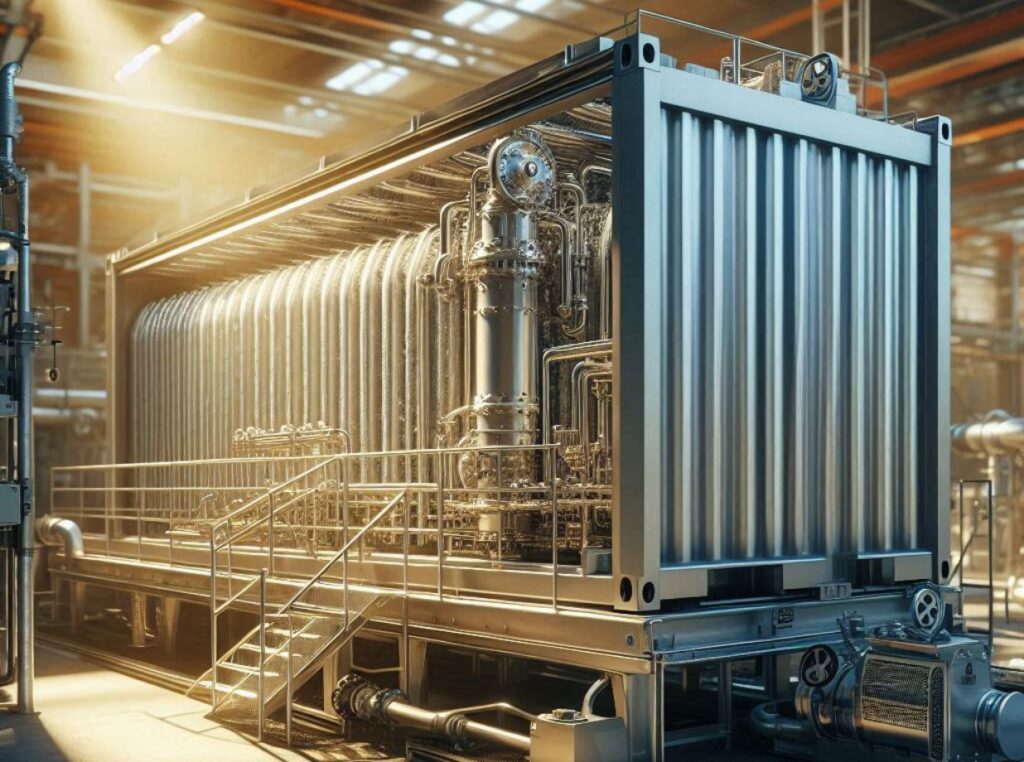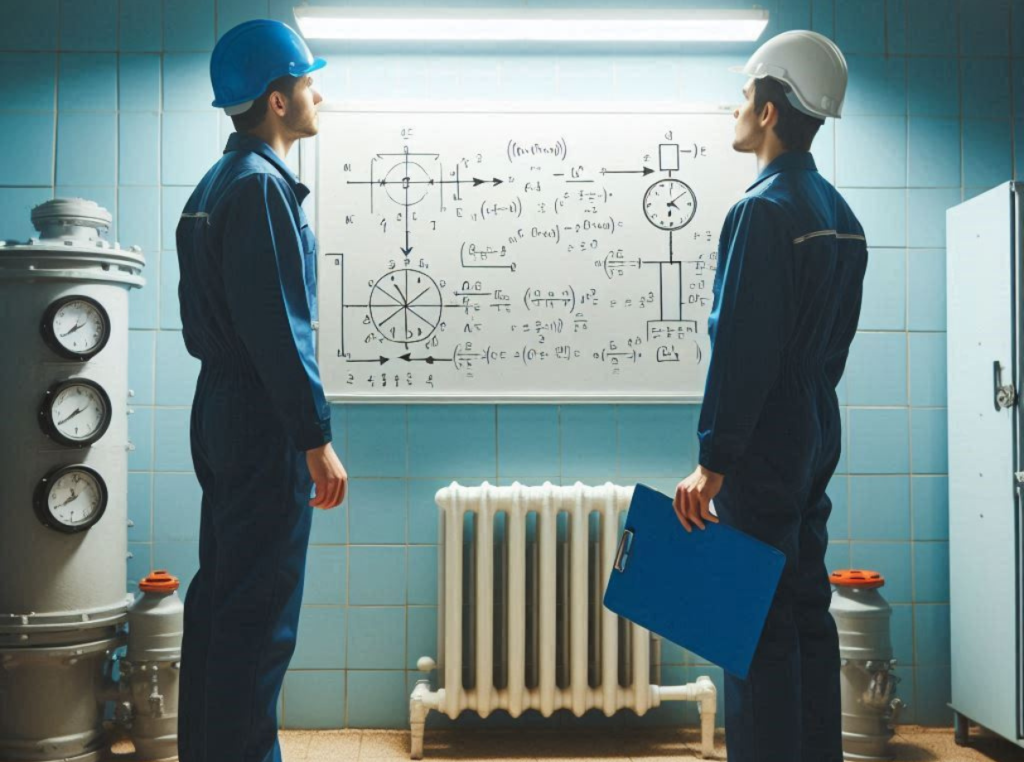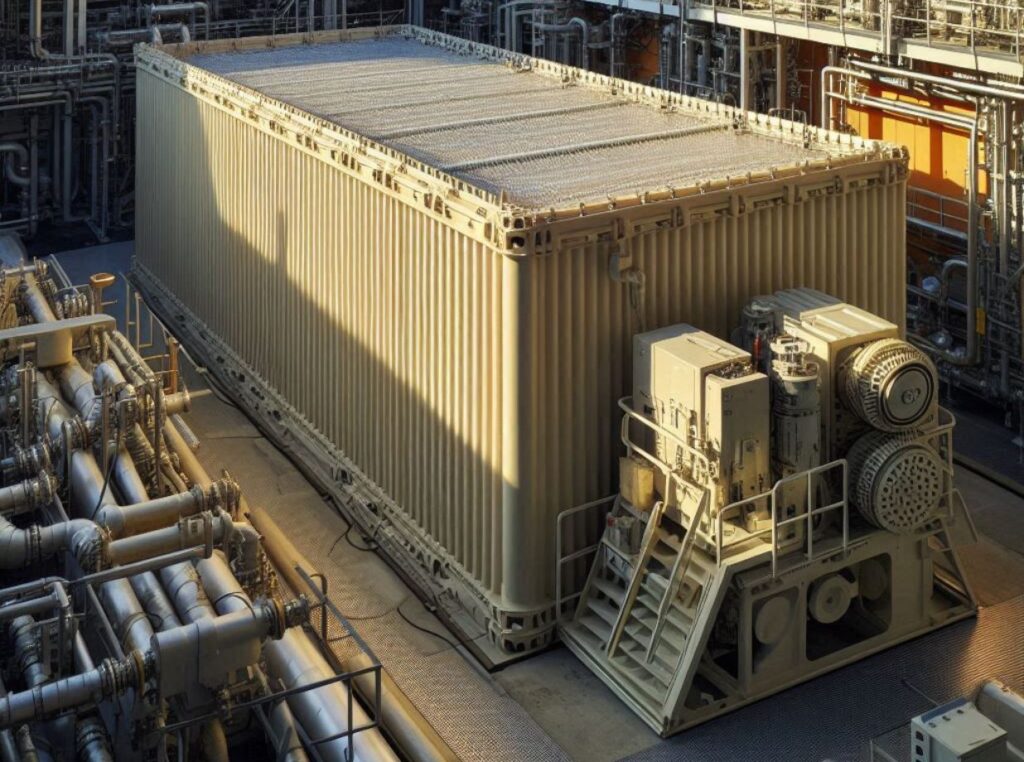In an era where water scarcity and environmental sustainability are at the forefront of global concerns, innovative technologies are emerging to address these pressing issues. Among them, Membrane Bioreactors (MBRs) stand out as a transformative solution in the realm of wastewater treatment and water reuse. Combining biological treatment processes with membrane filtration, MBRs offer a sophisticated approach to purifying water, making them increasingly popular in both municipal and industrial applications.
This guide will delve into the multifaceted world of Membrane Bioreactors, beginning with an introduction to their fundamental principles and operational mechanisms. We will explore the numerous advantages that MBRs bring to the table, including improved water quality and efficiency, which are critical in meeting stringent regulatory standards. Additionally, we will discuss how these systems contribute to reduced environmental impact by minimizing waste and promoting sustainable practices.

Key Takeaways
- Membrane bioreactors offer improved water quality and efficiency through advanced filtration and biological treatment processes.
- The versatility of membrane bioreactors allows for a wide range of water reuse applications, from industrial to municipal settings.
- Technological advancements in membrane bioreactors continue to drive innovation and improve their effectiveness in water recycling.
- Successful case studies demonstrate the reduced environmental impact and cost-effectiveness of membrane bioreactor projects.
- Despite their benefits, challenges and considerations in implementation must be carefully addressed for successful membrane bioreactor projects.
Introduction to Membrane Bioreactors
As the world grapples with the growing demand for clean water and the need to address the challenges of water scarcity, innovative technologies have emerged to revolutionize the way we manage and reuse this precious resource. One such technology that has gained significant attention in the water treatment and reuse industry is the membrane bioreactor (MBR). MBRs are a hybrid system that combines the principles of biological wastewater treatment with the advanced filtration capabilities of membrane technology.
At the core of an MBR system is the integration of a biological treatment process, typically involving the use of activated sludge, with a membrane filtration unit. This unique combination allows for the efficient removal of contaminants, pathogens, and other impurities from wastewater, resulting in high-quality effluent that can be safely reused or discharged back into the environment. The basic principle of an MBR is to leverage the biological degradation of organic matter by microorganisms, while the membrane component acts as a physical barrier, separating the treated water from the biomass.
The role of membrane bioreactors in the water treatment and reuse industry is multifaceted. MBRs have become a game-changer, offering a sustainable and effective solution to address the growing concerns over water scarcity, environmental pollution, and the need for efficient water management practices. By providing a reliable and efficient means of treating and reclaiming wastewater, MBRs have the potential to significantly contribute to the circular economy, where water resources are conserved, recycled, and reused, rather than being discarded after a single use.
The Advantages of Membrane Bioreactors
The adoption of membrane bioreactors in the water treatment and reuse industry has brought about a host of advantages that have revolutionized the way we approach water management. These advantages can be broadly categorized into two key areas: improved water quality and efficiency, and reduced environmental impact.
Improved water quality and efficiency is a hallmark of membrane bioreactor technology. MBRs are designed to enhance the removal of contaminants and pathogens, resulting in a higher-quality effluent that can be safely reused for various applications. The combination of biological treatment and membrane filtration allows for the effective removal of organic matter, suspended solids, and even trace micropollutants, which are often challenging to remove using conventional wastewater treatment methods. This improved water quality not only ensures the safety of the reclaimed water but also expands the potential for its reuse, whether in domestic, municipal, or industrial settings.
Furthermore, membrane bioreactors have demonstrated increased water recovery and reuse potential. By efficiently separating the treated water from the biomass, MBRs can achieve higher water recovery rates compared to traditional wastewater treatment systems. This translates to a more efficient use of water resources, reducing the demand for freshwater and contributing to the overall sustainability of water management practices.
In addition to the advantages related to water quality and efficiency, membrane bioreactors have also played a significant role in reducing the environmental impact of water treatment and reuse. By minimizing the discharge of wastewater and pollutants, MBRs help to conserve water resources and alleviate the burden on natural water bodies. The reduced environmental impact is further amplified by the potential for resource recovery, where valuable nutrients and other resources can be extracted from the treated wastewater, contributing to a more circular and sustainable approach to water management.
Improved Water Quality and Efficiency
One of the primary advantages of membrane bioreactors is their ability to enhance the quality of treated water, making it suitable for a wide range of reuse applications. MBRs excel at removing contaminants and pathogens, ensuring that the reclaimed water meets stringent water quality standards.
The enhanced removal of contaminants and pathogens is achieved through the synergistic effect of the biological treatment and membrane filtration processes. The biological component, typically involving the use of activated sludge, effectively degrades organic matter and removes nutrients, such as nitrogen and phosphorus, through various metabolic pathways. The membrane filtration unit, on the other hand, acts as a physical barrier, trapping suspended solids, bacteria, and even viruses, ensuring that the treated water is free from these impurities.
The ability of membrane bioreactors to remove a wide range of contaminants, including emerging micropollutants, sets them apart from conventional wastewater treatment methods. MBRs have demonstrated superior performance in removing pharmaceuticals, personal care products, and other trace organic compounds that are increasingly found in wastewater. This enhanced contaminant removal capability expands the potential for water reuse, as the treated effluent can be safely used for various applications, such as agricultural irrigation, industrial processes, and even indirect potable reuse.
In addition to improved water quality, membrane bioreactors also contribute to increased water recovery and reuse potential. The efficient separation of the treated water from the biomass, facilitated by the membrane filtration process, allows for higher water recovery rates compared to traditional wastewater treatment systems. This increased water recovery reduces the demand for freshwater, conserving this precious resource and contributing to the overall sustainability of water management practices.
Reduced Environmental Impact
| Advantages of Membrane Bioreactors | Benefits |
|---|---|
| High-quality effluent | Improved water reuse |
| Small footprint | Space-saving solution |
| Reduced sludge production | Lower disposal costs |
| Flexible design | Adaptable to various applications |
Membrane bioreactors have emerged as a game-changer in the water treatment and reuse industry, not only by improving water quality and efficiency but also by significantly reducing the environmental impact of water management practices.
One of the key advantages of MBRs is their ability to minimize the discharge of wastewater and pollutants into the environment. By effectively removing contaminants and pathogens from the wastewater, MBRs ensure that the treated effluent can be safely discharged or, even better, reused for various applications. This reduction in wastewater discharge helps to alleviate the burden on natural water bodies, such as rivers, lakes, and oceans, and mitigates the risk of environmental pollution.
Furthermore, the conservation of water resources is a crucial aspect of the environmental benefits associated with membrane bioreactors. By enabling efficient water recovery and reuse, MBRs contribute to the overall sustainability of water management practices. This reduced demand for freshwater not only conserves this precious resource but also helps to address the growing challenges of water scarcity, which are becoming increasingly prevalent in many regions around the world.
Beyond the direct benefits of water conservation and pollution reduction, membrane bioreactors also have the potential to facilitate the recovery of valuable resources from wastewater. Through the efficient treatment and separation processes, MBRs can extract nutrients, such as nitrogen and phosphorus, as well as other resources, which can then be repurposed for various applications, such as agricultural fertilizers or industrial processes. This circular approach to water management aligns with the principles of the circular economy, where resources are continuously reused and recycled, minimizing waste and environmental impact.
Versatility in Water Reuse Applications
The versatility of membrane bioreactors is a testament to their ability to adapt to a wide range of water reuse applications, catering to the diverse needs of various sectors, from domestic and municipal settings to industrial operations.
In the domestic and municipal water reuse domain, MBRs have proven to be a valuable technology. The high-quality effluent produced by MBRs can be safely used for non-potable applications, such as landscape irrigation, toilet flushing, and industrial cooling, reducing the demand for freshwater in urban areas. This not only conserves water resources but also alleviates the strain on municipal water supply systems, particularly in regions facing water scarcity challenges.
The industrial sector has also embraced the benefits of membrane bioreactors, as they offer a reliable and efficient solution for water reuse and recycling. MBRs are well-suited for industrial applications, where water is a critical resource for various processes, such as manufacturing, cooling, and cleaning. By treating and reclaiming industrial wastewater, MBRs enable industries to reduce their freshwater consumption, lower their environmental footprint, and contribute to the overall sustainability of their operations.
One of the notable advantages of membrane bioreactors in industrial water reuse is their ability to handle a wide range of wastewater compositions. MBRs can effectively treat wastewater streams with varying levels of contaminants, making them adaptable to different industrial settings, from food and beverage processing to pharmaceutical manufacturing and beyond. This versatility allows industries to adopt MBR technology and integrate it seamlessly into their water management strategies, maximizing the benefits of water reuse and recycling.
Technological Advancements in Membrane Bioreactors
The rapid evolution of membrane bioreactor technology has been a driving force behind its widespread adoption and success in the water treatment and reuse industry. Continuous advancements in membrane materials and design, as well as improvements in bioreactor configurations and process optimization, have contributed to the enhanced performance and efficiency of MBR systems.
One of the key areas of technological advancement in membrane bioreactors is the development of improved membrane materials and design. Researchers and engineers have been working tirelessly to develop membranes with enhanced permeability, selectivity, and fouling resistance. The use of novel membrane materials, such as polymeric and ceramic membranes, has led to improved filtration capabilities, increased water recovery rates, and reduced maintenance requirements.
In addition to membrane advancements, the bioreactor configurations and process optimization techniques have also undergone significant improvements. Innovative bioreactor designs, such as the use of submerged or side-stream configurations, have enhanced the efficiency of the biological treatment process, leading to better contaminant removal and reduced energy consumption. Furthermore, the optimization of operating parameters, such as aeration, sludge retention time, and membrane cleaning strategies, has contributed to the overall performance and cost-effectiveness of MBR systems.
These technological advancements have not only improved the performance of membrane bioreactors but have also expanded their applications and made them more accessible to a wider range of users. As the technology continues to evolve, we can expect to see even more efficient and cost-effective MBR systems that can cater to the growing demand for sustainable water management solutions.
Challenges and Considerations in Membrane Bioreactor Implementation
While membrane bioreactors have revolutionized the water treatment and reuse industry, there are still some challenges and considerations that need to be addressed for their successful implementation and widespread adoption.
One of the key operational and maintenance challenges associated with MBRs is the potential for membrane fouling. Membrane fouling can occur due to the accumulation of organic matter, suspended solids, and microbial growth on the membrane surface, leading to a decline in permeate flux and increased energy consumption. Addressing membrane fouling requires a comprehensive approach, including regular cleaning, optimization of operating parameters, and the development of more fouling-resistant membrane materials.
Another important consideration in the implementation of membrane bioreactors is the cost-effectiveness and energy efficiency of the systems. MBRs generally require higher capital and operational costs compared to conventional wastewater treatment methods, primarily due to the membrane filtration component and the energy-intensive aeration requirements. Efforts are being made to improve the cost-effectiveness of MBRs through technological advancements, economies of scale, and the development of more energy-efficient process configurations.
Despite these challenges, the benefits of membrane bioreactors in terms of improved water quality, increased water reuse potential, and reduced environmental impact often outweigh the initial investment and operational costs. As the technology continues to evolve and become more widely adopted, the cost-effectiveness of MBRs is expected to improve, making them a more attractive option for water treatment and reuse applications.
Case Studies: Successful Membrane Bioreactor Projects
The success of membrane bioreactor technology in the water treatment and reuse industry can be demonstrated through various case studies from around the world. These real-world examples showcase the tangible benefits and performance of MBR systems in different settings, highlighting their versatility and adaptability.
One notable example is the implementation of a membrane bioreactor system in a municipal wastewater treatment plant in Singapore. The plant, which serves a population of over 1 million, has successfully integrated an MBR system to treat and reclaim wastewater for non-potable uses, such as industrial cooling and landscape irrigation. The high-quality effluent produced by the MBR has enabled the plant to reduce its freshwater consumption and contribute to the city’s overall water sustainability.
Another case study can be found in the industrial sector, where a pharmaceutical manufacturing facility in the United States has adopted a membrane bioreactor system to treat and recycle its wastewater. The MBR system has allowed the facility to effectively remove a wide range of contaminants, including pharmaceutical residues, and reuse the treated water for various in-plant processes, reducing the demand for freshwater and minimizing the environmental impact of its operations.
These case studies, and many others like them, demonstrate the real-world benefits and performance of membrane bioreactors in diverse settings. They showcase the ability of MBR technology to adapt to the specific needs and challenges of different water treatment and reuse applications, while delivering tangible improvements in water quality, water reuse, and environmental sustainability.
The Future of Membrane Bioreactors in Water Reuse and Recycling
As the world continues to grapple with the challenges of water scarcity and the need for sustainable water management practices, the future of membrane bioreactors in the water reuse and recycling industry looks increasingly promising.
Emerging trends and innovations in membrane bioreactor technology point to a future where MBRs will play an even more pivotal role in revolutionizing water management. Advancements in membrane materials, such as the development of more fouling-resistant and energy-efficient membranes, are expected to enhance the performance and cost-effectiveness of MBR systems. Additionally, the integration of advanced control systems, machine learning, and data analytics will enable MBRs to operate more efficiently, optimize their performance, and adapt to changing water quality and demand requirements.
The potential for widespread adoption of membrane bioreactors is also on the rise, as the benefits of this technology become more widely recognized and the need for sustainable water management solutions becomes increasingly urgent. As governments and industries around the world strive to meet their water-related sustainability goals, the demand for reliable and efficient water reuse and recycling technologies, such as MBRs, is expected to grow exponentially.
The impact of widespread membrane bioreactor adoption on sustainable water management cannot be overstated. By enabling the efficient treatment and reclamation of wastewater, MBRs can contribute to the conservation of freshwater resources, reduce the environmental burden of wastewater discharge, and support the transition towards a more circular economy. As the technology continues to evolve and become more accessible, the potential for membrane bioreactors to transform the way we manage and reuse water resources is truly remarkable.
Conclusion
In conclusion, membrane bioreactors have emerged as a game-changing technology in the water treatment and reuse industry, offering a sustainable and efficient solution to the pressing challenges of water scarcity and environmental protection. From improved water quality and efficiency to reduced environmental impact and versatility in water reuse applications, MBRs have demonstrated their ability to revolutionize the way we approach water management. As the technology continues to advance and become more widely adopted, the future of membrane bioreactors in water reuse and recycling holds immense promise for a more sustainable and resilient water future.

Additional Resources
Staying current with membrane bioreactor technology requires access to reliable, up-to-date information. The following resources offer comprehensive insights into MBR design, operation, and innovation. From academic journals and industry reports to professional organizations and online learning platforms, these carefully curated sources will help deepen your understanding of membrane bioreactor applications and advancements.
Academic Resources
- Water Research Journal – Leading journal featuring the latest research on water treatment technologies
- Journal of Membrane Science – Specialized publication on membrane technology developments
Industry Organizations
- International Water Association (IWA) – Global network of water professionals
- Water Environment Federation (WEF) – Technical and educational organization for water quality professionals
Technical Guidelines
- EPA Guidelines for Water Reuse – Comprehensive guidance on water reuse applications
- American Water Works Association – Standards and resources for water treatment
Online Learning
- Coursera: Water Treatment Engineering – Online courses on water treatment technologies
- edX: Water and Wastewater Treatment – Professional education in water treatment
Industry Reports
- Global Water Intelligence – Market analysis and industry trends
- BlueTech Research – Technology assessments and market insights
